Viscosity test method | Excellent texture of high-end brand yogurt
Consumers have fallen in love with a variety of yogurt, and the Greek-style yoghurt is a testament to this. The most notable of the high-end products is that the consistency of the yogurt has changed and the formula has become more concentrated, making the taste of the yogurt more mellow. Icelandic yogurt (Skyr) has undoubtedly joined the ranks of high-end brand yogurt. We purchased three different brands of Icelandic yoghurt and evaluated its hardness and viscosity using a texture analyzer, which is related to the taste.
Â
Test principle
When considering the possible test methods for physical testing, consider what characteristics users look for in Icelandic yogurt. Since most Icelandic yogurt is contained in a container, the user's first reaction is to pick up the yogurt with a spoon. The most obvious test is to determine the degree of hardness (peak load or hardness), such as the hardness when excavating and pour out the yogurt, and the hardness (consistency), which is the energy required to overcome the structure of the material when the yogurt is removed. Adhesion was also measured because it mimicked the act of separating Icelandic yogurt from the spoon. Viscosity (adhesion) is the amount of work required to remove the yogurt from the spoon.
Â
Test Equipment
The test will use a texture analyzer ( Brofield CT3 Texture Analyzer). This instrument can measure the material by compression or stretching to make the object flow. A more interesting property is the resistance to motion of the material, which is characterized by units of gram force. Figure 10 shows the bottom shallow angle cone probe and Figure 9 shows the probe pushing down the Icelandic yogurt sample ( used by Kathy ). The objective is to quantitatively test the texture analyzer on the Icelandic yogurt test sample to establish a correlation between the subjective sensory properties achieved by touching, painting or processing the sample.
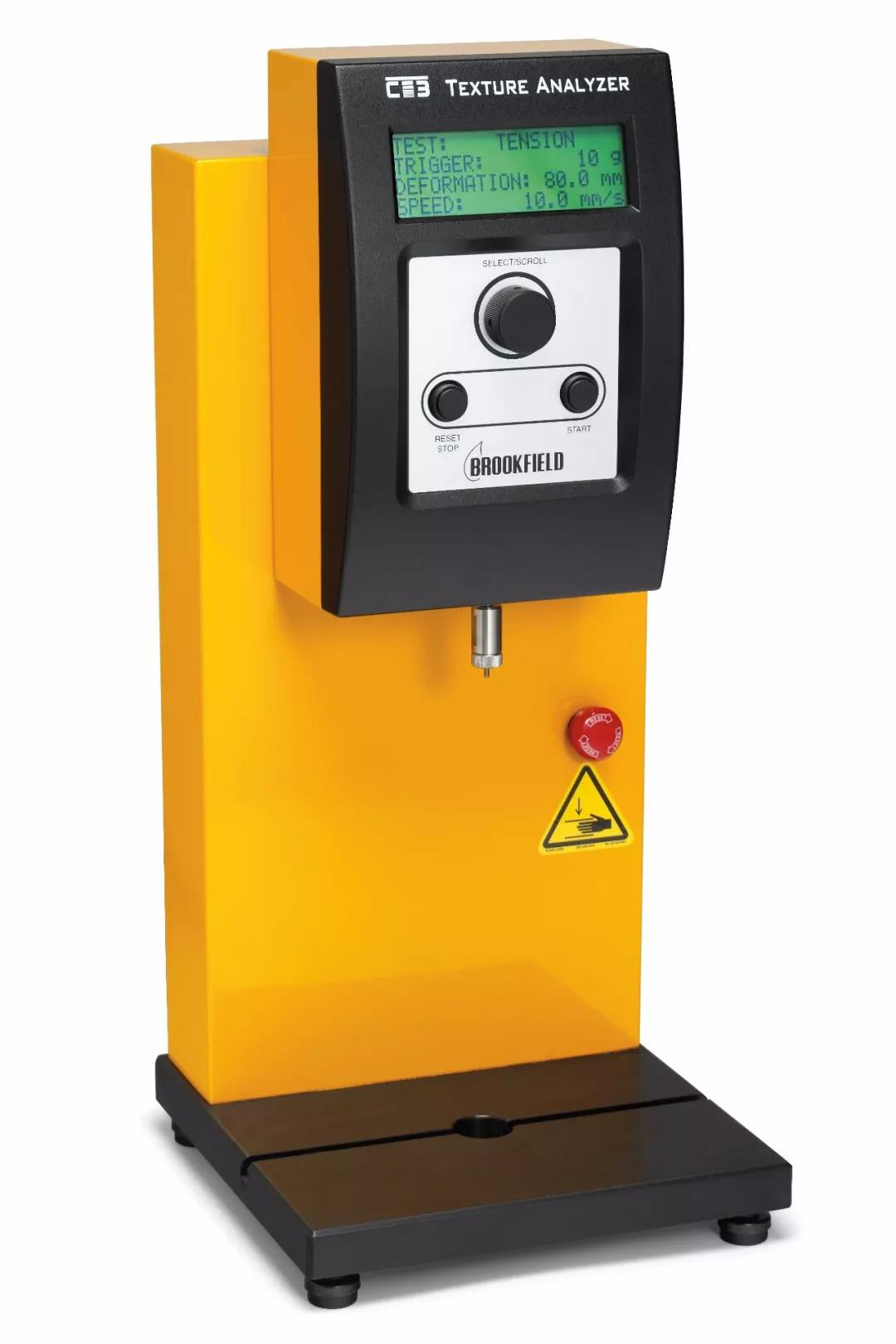
Device Configuration
l CT3 texture analyzer and 4500 power sensor (CT34500115)
l Square fixture base station (TA-BT-KIT)
l 40mm diameter, 170 ° shallow angle cone probe ( TA54 ) Â
l TextureProCT software ( TA-CT-PRO-AY ) (software is optional, texture analyzer can be tested in stand-alone mode)
Â
Method setting
Test Type | : | Compression |
Pre-Test Speed | : | 1.0 mm/s |
Test Speed | : | 1.0 mm/s |
Post-Test Speed | : | 1.0 mm/s |
Target Type | : | Distance |
Target Value | : | 15 mm |
Trigger Load | : | 5 gm |
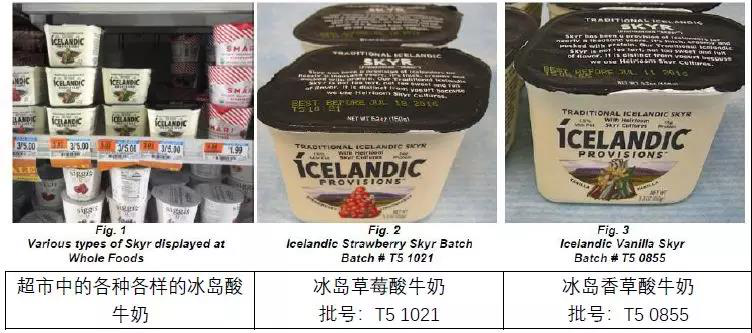
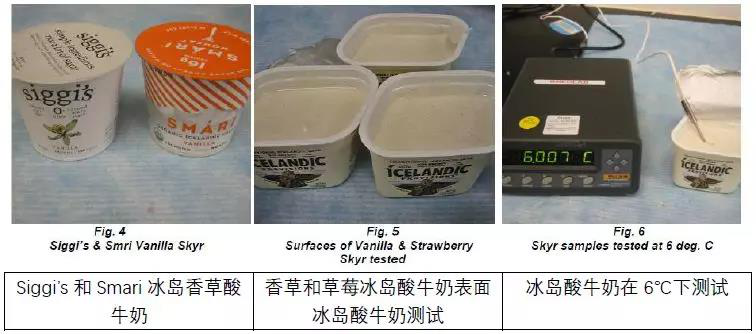
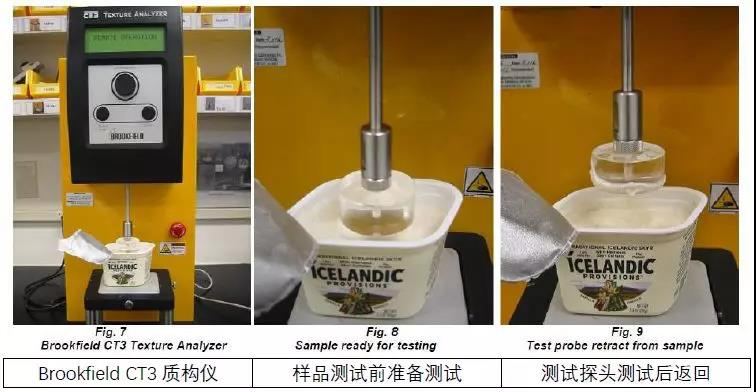
Sample Preparation
1. Place the sample container on the table and tap gently to remove air from the inside of the sample.
2. Ensure that the sample surface is smooth and undisturbed.
3. Use a rubber scraper to smooth or flatten the surface of the sample to ensure that the surface of the sample is flat.
4, test samples were stored in the refrigerator for 8 hours before the test.
The Icelandic yogurt sample was taken from a 6 °C controlled refrigeration system and tested at the center of its container. The test probe is pressed into the sample and the response is evaluated.
Â
Test procedure
1. Install a shallow pyramid probe on the texture analyzer
2. Remove the sample from the thermostat and place it on the abutment
3. Place the probe down 15mm above the center sample of the container.
4, start testing 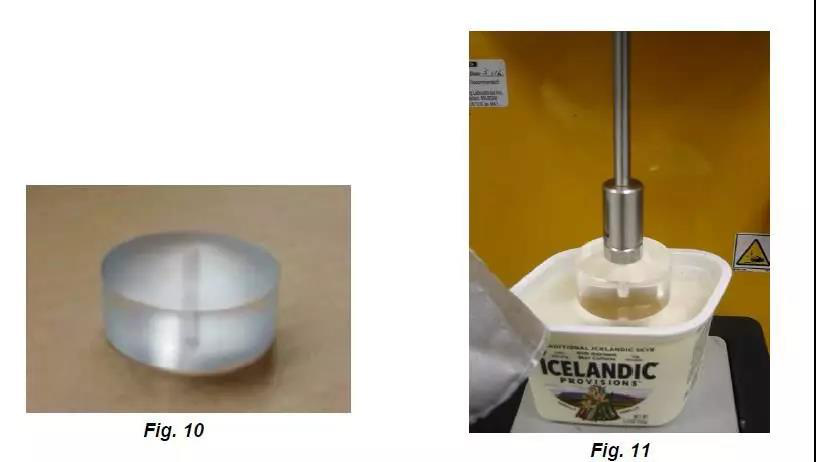
Note: The test temperature conditions for all samples should be kept constant and all samples should be tested at room temperature immediately after removal from the refrigerator.
Â
Result analysis
Figure 12 below shows the hardness, hardness, adhesion and adhesion of three different Icelandic yogurt (vanilla flavor) samples.
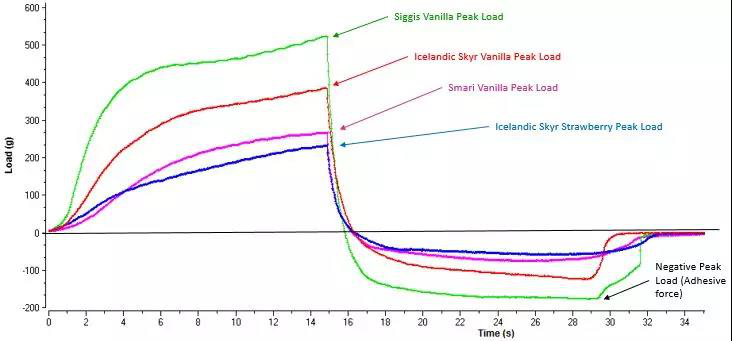
Figure-12
Â
When the trigger force reaches 5 g, the probe penetrates the specimen at a test speed of 1.0 mm/s with a depth of 15 mm. During this time, the force penetrating the sample increases. When the specified downforce distance is reached, the probe is pulled away (return) from the sample at the same speed. The maximum force value on the graph is a measure of the hardness of the sample at a specified depth. The area under the positive curve (the area between the curve above the X-axis and the X-axis) is the energy (consistency) required to compress the sample to a specified distance. Higher peak load (hardness) and hardness work also indicate that this is a poorly coatable (not easily spread) sample. Conversely, a lower peak load (hardness) will correspond to a lower hardness work, indicating a better coatability (easy to be spread).
Â
When the probe is retracted from the yogurt to the starting position, the adhesion characteristics of the yogurt to the probe will produce a negative curve on the graph (ie , the curve below the X- axis). This indicates the adhesion of the sample and the resistance to separation ( flow ) from the probe . The maximum negative force in the figure is the adhesion of the sample ; the more negative the value, the more " sticky " the sample is . FIG items in the area of the negative portion (i.e., the X-axis under the curve, the area sandwiched between the X axis) is called adhesion (required to open the probe / sample contact with energy).
Â
The results of the three Skyr-type yoghurt samples were all shallow-column probes. 
Figure- 13
Â
in conclusion
The test results show that the texture analyzer is suitable for sample detection of Icelandic yogurt. The data obtained is easily used to compare the differences between branded products. Correlation with the human sensory panel assessment provides a baseline for measurement limits for quality control in daily mass production (pass/fail) testing. Manufacturers should take advantage of this valuable test to ensure that consumers have the same sensory feel for every cup of yogurt. In order to test the reproducibility and repeatability of the results, the consistency of the test procedure, sample preparation and equipment settings must be observed.
Micro-prismatic Reflective Tape
Diamond Reflective Tape,Transparent Reflective Tape,Diamond Grade Reflective Tape,Diamond Grade Reflective Sheeting
Kunshan Jieyudeng Intelligent Technology Co., Ltd. , https://www.jerrytape.com